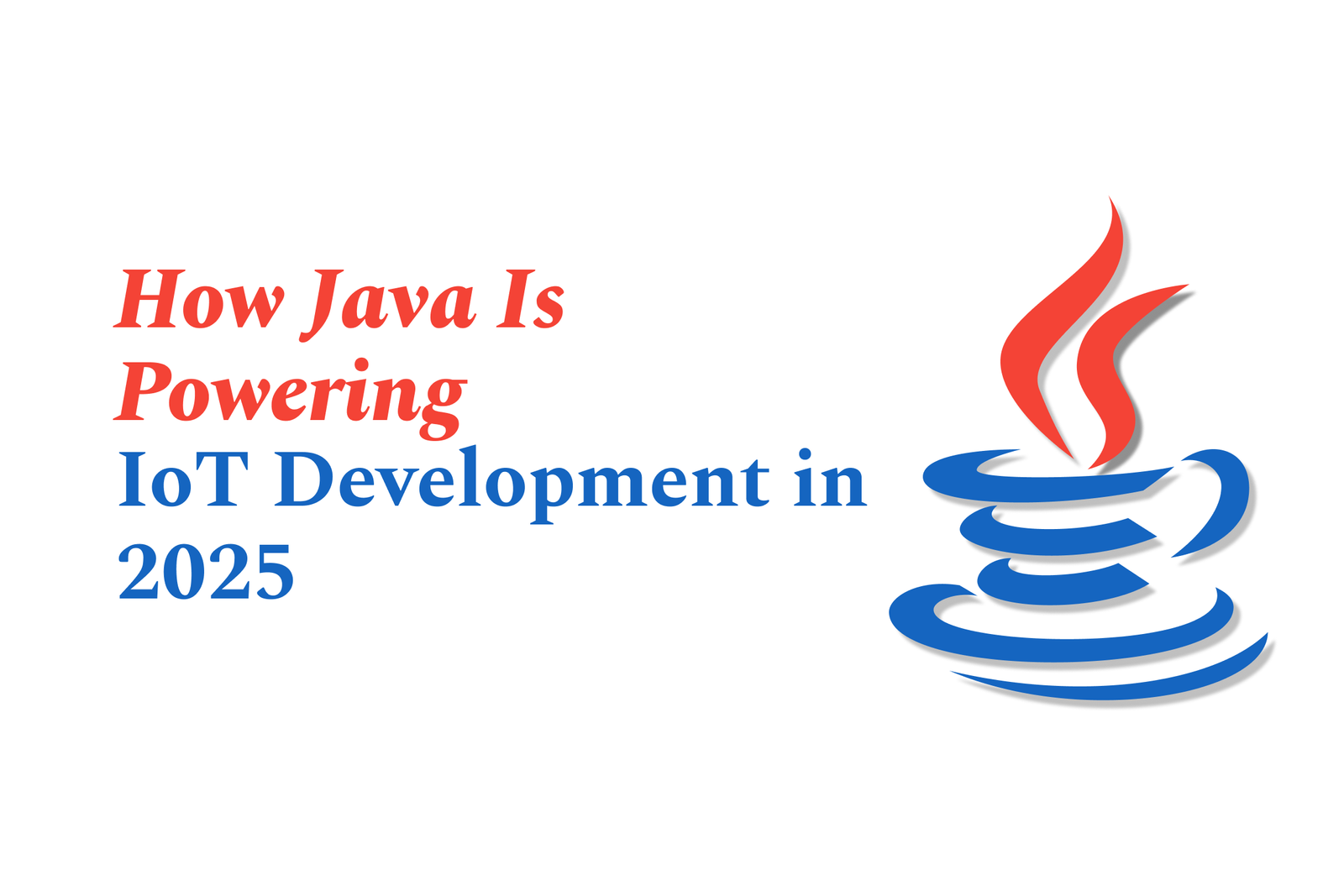How Java is Powering IoT Development in 2025
In 2025, Java powers IoT development by offering cross-platform compatibility, robust security, and scalable frameworks. Its reliability and cloud-native support enable real-time data processing and seamless integration, driving smart agriculture and industrial IoT innovations worldwide.
How Java Is Powering IoT Development in 2025
1 ) Java’s Enduring Presence in 2025
Despite being nearly three decades old, Java remains a dominant language widely used in enterprise and IoT development.
Over 90% of Fortune 500 companies utilize Java for building scalable, secure, and high performance applications.
Java’s evolving ecosystem keeps it relevant, with improvements through frequent updates and advancements such as GraalVM and Project Loom.
2 ) Key Strengths of Java in IoT Development
Cross Platform Compatibility: Java runs smoothly across various IoT devices and sensor platforms.
Reliability & Stability: Its object oriented design ensures mission critical applications operate seamlessly.
Security: Offers advanced encryption, authentication, and built in frameworks (e.g., Spring Security) to protect sensitive data.
Scalability: Handles vast volumes of sensor data, crucial for large scale IoT farming or industrial projects.
Real Time Processing: Efficiently processes real time data streams for tasks like precise automation.
3 ) Java’s Role in Smart Agriculture IoT Solutions
Java enables IoT applications for precision irrigation, crop and livestock monitoring by linking sensors, cloud platforms, and automation tools.
Example: A Java backend system collects soil moisture data and automatically triggers irrigation when thresholds are met, optimizing water usage.
Benefits include increasing crop yields while reducing resource consumption such as water by up to 30%.
4 ) Complementing Java with Node.js in IoT
Node.js supports real time, data intensive IoT applications leveraging its event driven, non blocking architecture.
Ideal for handling many simultaneous sensor connections and delivering instant notifications (e.g., weather alerts).
Used alongside Java to optimize different IoT functions—Java for backend stability and Node.js for lightweight, real time communication.
5 ) Java Frameworks Empowering Modern IoT Apps
Frameworks like Spring Boot, Micronaut, Quarkus, Jakarta EE, Vert.x, and JHipster are at the forefront for building cloud native, microservice oriented IoT solutions.
They provide rapid prototyping, strong security, scalability, and seamless cloud integration essential for IoT ecosystems.
Popular frameworks support features vital to edge computing, real time microservices, and high concurrency systems.
6 ) DevOps and Cloud Native Integration with Java
Java seamlessly integrates with DevOps tools such as Jenkins, GitLab CI/CD, Kubernetes, and Terraform, streamlining continuous integration and deployment.
Cloud native Java development supported by Spring Boot and Micronaut enables scalable, resilient distributed IoT applications.
Automated pipelines accelerate delivery of Java based IoT projects and simplify infrastructure management.
7 ) Security and Data Protection in IoT
Java includes comprehensive security mechanisms crucial for safeguarding IoT agriculture or industrial data.
Frameworks like Spring Security help manage authentication, authorization, and encryption.
This is critical as IoT systems often handle sensitive environmental and operational data requiring robust protection.
Summary:
In 2025, Java remains a foundational technology in IoT development, particularly within smart agriculture. Its platform independence, strong performance, security features, and adaptability through modern frameworks ensure it effectively powers real time, large scale IoT systems. When combined with complementary technologies like Node.js and integrated with cloud native and DevOps practices, Java continues to drive innovation and efficiency in the evolving IoT landscape.
https://justacademy.in/news-detail/java-in-blockchain-smart-contracts:-use-cases
https://justacademy.in/news-detail/react-native-expo-go-app:-what?s-new-in-2025
https://justacademy.in/news-detail/flutter-in-fintech-app-development
https://justacademy.in/news-detail/java-and-kubernetes:-tips-for-developers
https://justacademy.in/news-detail/apple?s-new-developer-documentation-portal-explained
Related Posts
In 2025, top Angular libraries offer modern, feature-rich components and tools for building dynamic web apps. From powerful data grids to low-code platforms like UI Bakery, these libraries enhance development speed, UI design, and scalability, making them essential for Angular developers.
Migrating from AngularJS to Angular 17 involves gradually upgrading your app by running both frameworks together using tools like ngUpgrade, rewriting components in TypeScript, and adopting Angular’s modern architecture to enhance performance, maintainability, and long-term support.
Angular state management tools help organize and handle app data efficiently, improving scalability and maintainability. Popular options include NgRx for robust, RxJS-based patterns, and newer Signal Store solutions that offer simpler, reactive approaches integrated tightly with Angular’s latest features.
RxJS in Angular empowers developers to manage asynchronous data streams with powerful operators like `forkJoin`, `combineLatest`, and `zip`. Mastering these key operators in 2025 is essential for building efficient, reactive applications that handle complex event sequences seamlessly.
Angular performance optimization in 2025 focuses on improving app speed and responsiveness by using techniques like OnPush change detection, lazy loading, efficient data caching, and AOT compilation. These practices reduce load times, enhance user experience, and ensure scalable, fast Angular applications.
In 2025, Angular remains preferred for large-scale, enterprise apps with its robust, all-in-one framework, while Vue attracts developers seeking simplicity and fast development for smaller projects. Both frameworks excel, with choice driven by project needs and team expertise.
Angular Signals are a new reactive primitive in Angular 16 that enable fine-grained, efficient change detection by automatically tracking dependencies and updating only affected parts of the UI. They simplify state management and boost app performance, revolutionizing Angular's reactivity model.
Angular interview questions to prepare in 2025 focus on core concepts like components, directives, data binding, routing, and dependency injection, along with TypeScript mastery and latest Angular features to ensure strong practical knowledge for building scalable, efficient web applications.
AngularJS reached its official end of support in January 2022, meaning no further updates or security patches. To ensure app security and performance, developers should consider migrating to modern Angular versions or seek third-party long-term support options if immediate migration isn’t possible.
The Angular Roadmap 2025 highlights upcoming features focused on improving developer experience and performance, including zoneless Angular, Signals integration, enhanced Forms, async data handling, improved HMR, and expanded Angular Material/CDK enhancements, driving modern, efficient web app development.










